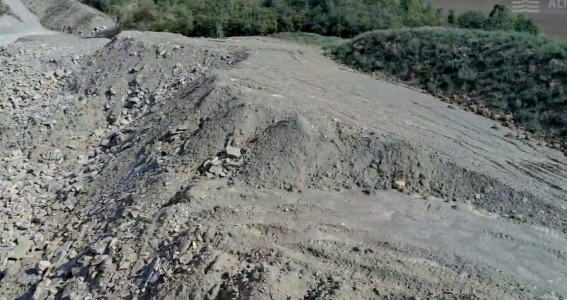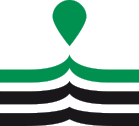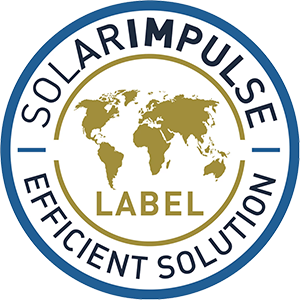
REMEDIATION (CHEMICAL OXIDATION) OF CONTAMINATED SOIL

THE CHALLENGE
Soil contamination by organic chemicals is a worldwide problem.
Soil contamination by organic chemicals is a worldwide problem.
THE TECHNOLOGY
SOA and AFA – in-situ, chemical oxidation processes based on the synthetic generation of highly concentrated superoxide radical and hydroperoxyl radicals.
SOA and AFA – in-situ, chemical oxidation processes based on the synthetic generation of highly concentrated superoxide radical and hydroperoxyl radicals.

SUPER-OXIDATION TECHNOLOGY
Based on synthetic generation of highly concentrated superoxide radical.
Based on synthetic generation of highly concentrated superoxide radical.


SUPER-OXIDATION TECHNOLOGY
Based on catalysis by upgrading the known Fenton and Haber-Weiss reactions.
Based on catalysis by upgrading the known Fenton and Haber-Weiss reactions.

VALUE PROPOSITION
u
Alpha Cleantec has developed a rapid and new solution (technology and machinery) able to decontaminate a wide range of organic pollutants (such as BTEX, TPH, PAH, CHC, PCB, herbicides, crude oil and drug leftovers) with contaminations of up to 100,000 ppm providing high conversion rates of
> 90 %.
u
The technology can be applied as an on-site batch treatment process or with existing equipment for in-situ treatment.
u
The methodology can be applied as a standalone process or as part of a soil treatment facility.
u
Decrease carbon footprint of soil treatment market.
BENEFITS OF OUR SOLUTION
| Granted Patents | |
| Elimination of contaminants in minutes to hours | |
| Treatment of a wide range of contaminants (BTEX, PAH, CHC, PCB, Herbicides) with high conversion (> 90%) | |
| Decontamination without toxic by-products | |
| Insignificant CO2 footprint |
| Cost-effective | |
| Very low electricity requirement | |
| Treatment procedures does not avoid continued use and safe work on site | |
| Safe for users and environment | |
| Adaptable to existing equipment and process |


| RANGE OF TREATABLE CONTAMINANTS GUIDE | ||||||
| IN-SITU | ON SITE | |||||
| Contaminants in Soil, wastewater, sluge, groundwater, surfaces |
SOA | AFA | WWO | SOA | AFA | MSO |
| BTEX | ||||||
| Benzene | ◆ | ◆ | ◆ | ◆ | ◆ | |
| Toluene | ◆ | ◆ | ◆ | ◆ | ◆ | |
| Ethylbenzene | ◆ | ◆ | ◆ | ◆ | ◆ | |
| Xylene | ◆ | ◆ | ◆ | ◆ | ◆ | |
| PETROLEUM HYDROCARBONS | ||||||
| Gasoline Range Organics (GRO) | ◆ | ◆ | ◆ | ◆ | ◆ | ◆ |
| Diesel Range Organics (DRO) | ◆ | ◆ | ◆ | ◆ | ◆ | ◆ |
| Oil Range Organics (ORO) | ◆ | ◆ | ◆ | ◆ | ◆ | ◆ |
| AROMATICS | ||||||
| Chlorobenzene | ◆ | ◆ | ◆ | ◆ | ◆ | |
| Bromobenzene | ◆ | ◆ | ◆ | ◆ | ◆ | |
| Dichlorobenzene | ◆ | ◆ | ◆ | ◆ | ◆ | |
| Nitrobenzene | ◆ | ◆ | ◆ | |||
| Phenol | ◆ | ◆ | ◆ | |||
| Styrene | ◆ | ◆ | ◆ | ◆ | ◆ | |
| Naphthalene | ◆ | ◆ | ◆ | ◆ | ◆ | |
| Trichlorobenzene | ◆ | ◆ | ◆ | |||
| Trimethylbenzene | ◆ | ◆ | ◆ | ◆ | ◆ | |
| PAHS | ||||||
| Phenathrene | ◆ | ◆ | ◆ | ◆ | ◆ | |
| Naphthalene | ◆ | ◆ | ◆ | |||
| Acenaphthylene | ◆ | ◆ | ◆ | |||
| CHLORINATED SOLVENTS | ||||||
| Tetrachloroethylene | ◆ | ◆ | ◆ | |||
| Trichloroethene | ◆ | ◆ | ◆ | ◆ | ◆ | |
| Dichloroethene | ◆ | ◆ | ◆ | ◆ | ◆ | |
| Vinyl chloride | ◆ | ◆ | ◆ | |||
| Tetrachloroethane | ◆ | ◆ | ◆ | ◆ | ◆ | |
| Trichloroethane | ◆ | ◆ | ◆ | |||
| Dichloroethane | ◆ | ◆ | ◆ | ◆ | ◆ | |
| Dibromochloroethane | ◆ | ◆ | ◆ | ◆ | ◆ | |
| Bromodichloromethane | ◆ | ◆ | ◆ | |||
| Carbon tetrachloride | ◆ | ◆ | ◆ | ◆ | ◆ | |
| Chloroethane | ◆ | ◆ | ◆ | ◆ | ◆ | |
| Chloroform | ◆ | ◆ | ◆ | ◆ | ◆ | |
| Chloromethane | ◆ | ◆ | ◆ | ◆ | ◆ | |
| Chlorotoluene | ◆ | ◆ | ◆ | ◆ | ◆ | |
| Methylene chloride | ◆ | ◆ | ◆ | |||
| PCBS | ◆ | ◆ | ◆ | ◆ | ◆ | |
| DIOXINS | ◆ | ◆ | ◆ | ◆ | ◆ | |
| PESTICIDES AND HERBICIDES | ||||||
| Glyphosate | ◆ | ◆ | ◆ | |||
| Goal | ◆ | ◆ | ◆ | |||
| EMULSIONS | ◆ | |||||
| SLUDGE | ◆ | ◆ | ◆ | |||
| MUNICIPAL SLUDGE | ◆ | |||||
| NUCLEAR LEFTOVERS | ◆ | |||||
CERTIFICATES AND APPROVALS
ENVIRONMENTAL IMPACT
CO2 Footprint

CO2 Emission (tons)
Time (years)
SUCCESS STORIES















